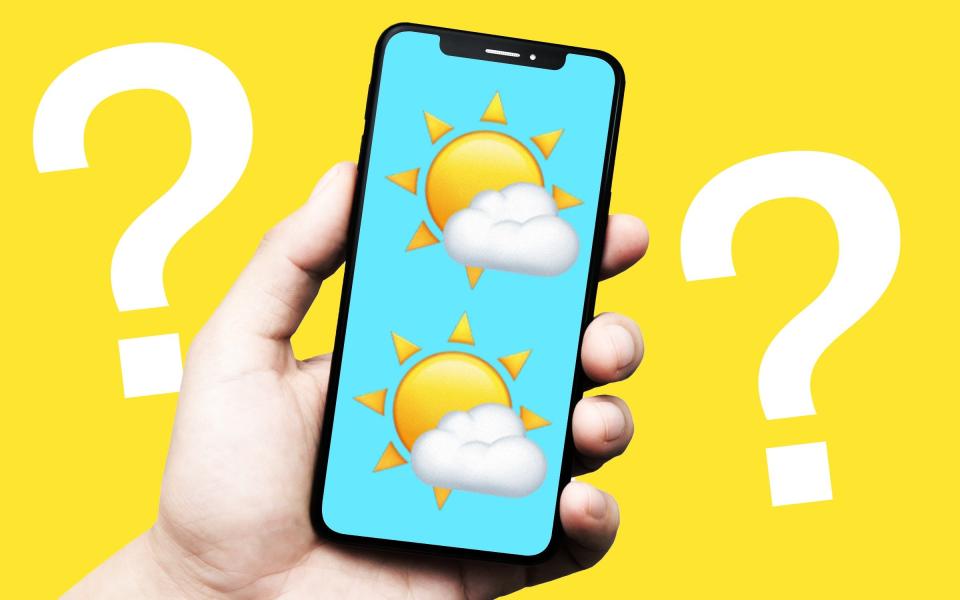Five weather apps you can actually rely on – and one you should avoid

As wildfires abroad contrast with the wet British summer of recent weeks, it is to a new national obsession that we are turning: weather apps. Is the heatwave coming here? When will we see the sun shine again? What are the pollen levels going to be when I’m having tea in Aunt Mabel’s garden at 4.12pm on the next Saturday but one?
Never have we had more easily-accessible information about the weather than we do today. Temperature, wind speed, wind direction, cloud cover, chance of rain, visibility, pollen, UV rays, air pollution, air humidity and air pressure: forecasts for all of this are available to us up to two weeks in advance at just a few taps of a mobile phone.
Britain’s new fixation means big business for the tech companies behind the apps. Some estimate there are more than 10,000 different weather apps available on iPhone and Android devices alone, while data firm Statista predicts they will generate £1.2bn in revenue this year, up from £400m just six years ago. Wherever you sit in the broad church from Met Office devotees and BBC purists, to Weather Channel enthusiasts and AccuWeather sticklers, big weather has all of us in its grip.
Deep down, however, many of us know that our weather app mania borders on the irrational. Yet still we place our faith in them despite the regularity of their inaccurate prophecies. One unlucky friend recently called off a long-planned barbecue because her app of choice predicted cats and dogs, only for the sun to shine all day long.
Another has several different apps installed on her phone and chooses to trust the forecast that best aligns with her plans for the day. “If I want to stay in, I’ll tell myself the most miserable outlook is going to come true,” she laughs. “But if I’m planning on a country walk at 2pm, then I’ll trust whichever one tells me it will be sunny at 2pm. I don’t care if it’s speculative, I want the most optimistic assessment.”
But what if we were to choose our weather app using logic? In terms of accuracy, user-friendliness and unique selling points (USPs), there are clear front-runners – and you might have not heard of all of them.
1. Met Office
In the World Meteorological Organisation’s (WMO) most recent weather apps awards, it was the Met Office that was named the world’s best public sector-provided app for usefulness, reliability and information quality, sharing the award with MyObservatory which only works in Hong Kong. “92.5 per cent of the Met Office’s next day temperature forecasts are accurate within two degrees celsius and 92 per cent of the Met Office’s next day wind speed forecasts are correct within five knots,” its website claims. As the UK’s official weather service, it is also responsible for weather warnings, issuing them directly to users as push notifications. These factors make it a reliable and user-friendly choice at the leading end of the weather app market.
2. Yr
Powered by data from the Norwegian Meteorological Institute, this little-known Scandinavian app has a simple and slick interface where users can choose between seeing the expected temperature, precipitation and wind speed as tables, graphs or maps. The app also offers succinct daily forecasts as notifications for you to wake up to, but its greatest strength is how hyper-local it is: it shows forecasts for your precise coordinates, rather than the nearest weather monitoring station or the closest town that happens to be in an app’s database. Very few competitors offer this capability.
3. The Weather Channel
According to industry analysts ForecastWatch, the US-based Weather Channel is the world’s most accurate forecaster, and it was also the joint private sector winner for usefulness, reliability and information quality at the WMO’s awards. Using data from IBM, the Weather Channel offers a main app with hurricane, lightning and wildfire tracker capabilities on top of all the usual functions, as well as a separate Storm Radar app which displays the expected progress of storms over the next six hours on a map. These wide-ranging features make up for a slightly dated interface that can be a little information-dense, though real weather enthusiasts will not be daunted by that.
4. Blitzortnung
If you are interested in a more high-octane weather monitoring experience than simple charts and graphs, Blitzortnung (or ‘lightning detection’ in English) displays reported lightning strikes across the world in real time alongside strikes reported in the previous two hours. It offers no real forecasting capabilities and the mobile app is not as dynamic as the website, but this community-run platform nevertheless enables its users to accurately track thunderstorms as they happen.
5. AccuWeather
AccuWeather’s name builds big expectations and – unlike much of its competition – it hides some features behind a £3.99 monthly paywall. But users of the free version can still make use of MinuteCast, AccuWeather’s main USP which provides a minute-by-minute prediction of rainfall over the next four hours. Rapidly changing adverts can somewhat frustrate the user experience, but it still offers a solid, reliable and in-depth service for weather watchers – especially if you’re trying to decide if you can pop out quickly without getting drenched.
And what not to use – Apple Weather
Dark Sky was once the dark horse of the weather app market, pioneering minute-by-minute weather forecasts. That was until Apple bought it in 2020, integrated some features in its own Weather app and took Dark Sky off the App Store. Apple Weather comes pre-installed on every iPhone, is simple to use and does aggregate data from multiple sources to make its forecasts more reliable. But it has this year been hit by a series of crashes, particularly in April and May, which makes switching to one of its outage-free competitors a sensible decision.

 Yahoo Finance
Yahoo Finance 